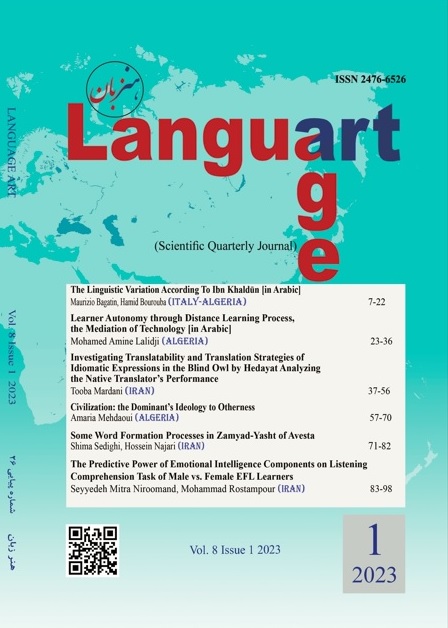The Linguistic Variation According To Ibn Khaldūn
DOI:
https://doi.org/10.22046/LA.2023.01Keywords:
Ibn Khaldūn’s Introduction, Arabic Language, Linguistic Variation, Contact of Languages, Bedouin and Urban Arabic, Linguistic Habit, ’I‘rāb, Corruption or Incorrect Pronunciation, Tongue, LanguageAbstract
In the last sections of the introduction (Muqaddimah), Ibn Khaldūn deals with some general issues related to languages, then he focuses on the Arabic language by writing a different outline from the one grammarians usually give. As a matter of fact, they are bound to a static representation of the linguistic reality, which ultimately includes only one language, that of the origins, harmonious and perfect, whose distinctive feature is the ’I‘rāb. Anything else is considered by them just as a corrupt form, a barbarization of this one language. The attention to historical and social changes, instead, allowed Ibn Khaldūn to elaborate a more dynamic model which embraces the idea of variation, not only synchronically, as it is for grammarians, also diachronically. Within this model the idea of corruption is just the beginning of a process of linguistic transformation that led to the appearance of at least three independent varieties of Arabic, each one with its own features.
Downloads
Published
How to Cite
Issue
Section
License
Copyright (c) 2023 Hamid Bourouba

This work is licensed under a Creative Commons Attribution 4.0 International License.

